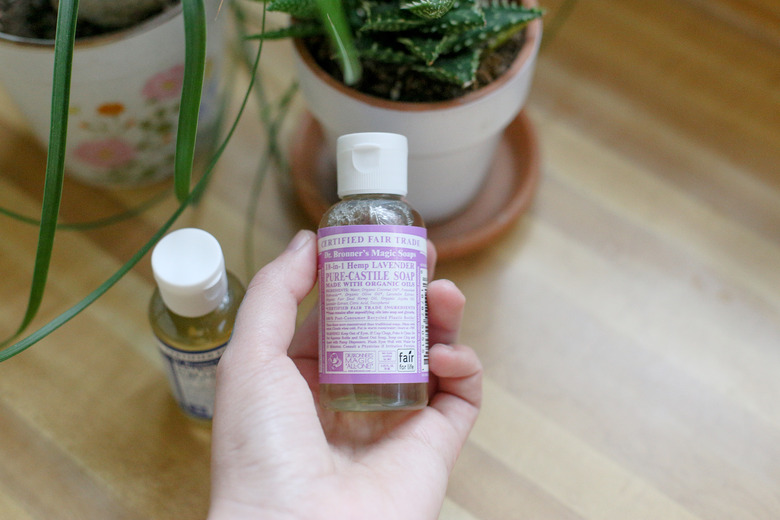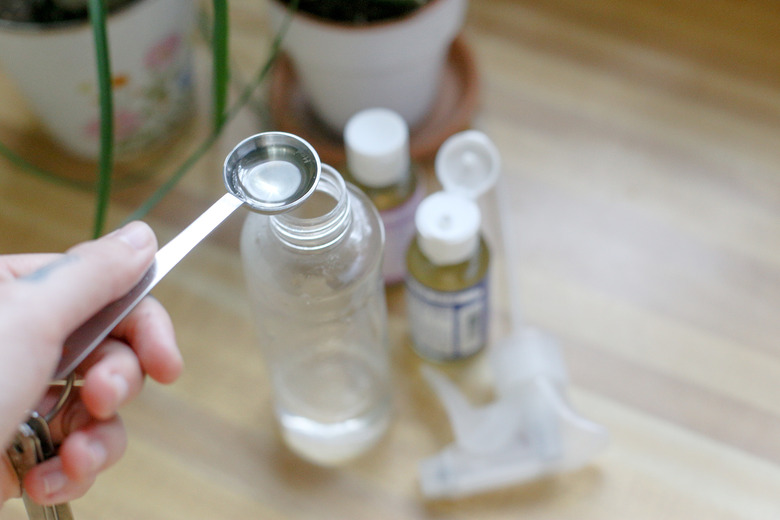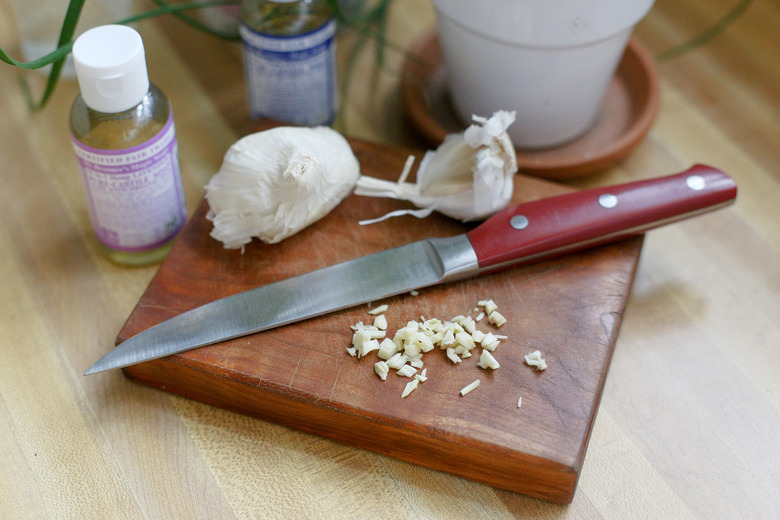How To Use Dr. Bronner's As Insecticidal Soap
Thrifty organic gardeners know that at their most basic, insecticidal pest sprays take no more than two ingredients — liquid soap and water. Some garden spray recipes call for using any type of nondetergent liquid soap, such as dish soap. But if you're concerned with the purity or the scent of the spray, you might turn to the Dr. Bronner's brand. Use Dr. Bronner's garden spray about once a week, as well as after rainfall. For bad infestations, apply the spray every three days.
The Doctor Is In
Homemade and commercial insecticidal soap sprays work by exploiting the fatty acid content in soaps. These fatty acids paralyze and eventually kill such soft-bodied insects as aphids, whiteflies, and thrips. In addition, adding liquid soap enables ingredients that have other repelling or insecticidal properties to better stick to the plants. Some organic gardeners prefer Dr. Bronner's liquid soap over dish soap because it is made with organic oils and uses fair-trade ingredients, without artificial sudsing additives, dyes, or fragrances.
Choose Your Potion
The unscented liquid castile soap in the Dr. Bronner's product line contains the fatty acids and sticking power that make soap spray effective. But some varieties may offer a little extra repelling power. Peppermint has the broadest applications in the garden, with the herb's reputation for repelling aphids, flea beetles, and moths. The lavender variety may also be helpful, especially if cabbage moths and other egg-laying moths are a concern.
The eucalyptus variety can be useful in limited garden applications, such as to deter cockroaches infesting indoor houseplant pots. If you'd like to keep neighborhood cats out of the garden at the same time as treating for insect pests, choose the citrus variety. Cats dislike the scent of citrus sprays.
Master the Mix
The proportion of Dr. Bronner's liquid castile soap used in the soapy water spray is crucial. Too much of it can burn plant leaves. Use 1 teaspoon of Dr. Bronner's soap in 1 quart of hot water. After mixing this thoroughly, pour the soapy water into a clean spray bottle. Once you've filled the spray bottle almost to the top, you can also add any other ingredients you might be including. Shake the bottle well after you've screwed the spray bottle top on.
Spike the Spray
For extra repelling power, use infused garlic water instead of plain water. Make the infusion by chopping up 12 cloves of garlic into 4 or 5 cups of water, leaving it overnight, and then straining the solution and mixing it with Dr. Bronner's soap. You might also add a spoonful of powdered cayenne pepper to the mix. Both cayenne and garlic are reputed to repel a broad range of damaging garden pests.
Drizzling in a dollop of vegetable oil — preferably canola — adds the ability to coat and smother small insects as well as their eggs and larvae. If you add oil to the soap, use it up within a few days to prevent it from turning rancid.


